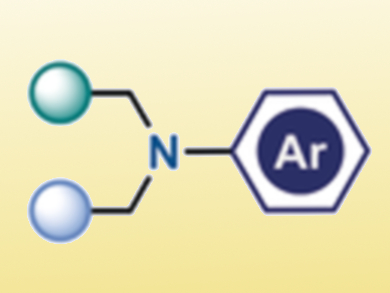Arylamines are essential components of pharmaceuticals, agrochemicals, and organic materials. However, synthetic methods that incorporate arylamines within complex molecular systems generally require catalysts, forcing conditions, and pre-functionalized aromatics.
Daniele Leonori and colleagues, University of Manchester, UK, have developed a general method for direct amination of unfunctionalized aromatics. The researchers used a single-electron transfer (SET) process, mediated by a Ru(bpy)3Cl2 (bpy = 2,2′-bipyridine) catalyst, photoexcited with blue-light emitting (450 nm) diodes. This approach allowed them to generate aminium radicals from protonated O-aryl hydroxylamines. The highly electrophilic aminium radicals react with a range of unfunctionalized aromatics to produce arylamines (pictured) selectively, including complex molecules such as the alkaloid strychnine.
The team used the method to produce a complex drug hybrid that combines the therapeutic properties of two blockbuster drugs, donepezil for the palliative treatment of Alzheimer’s disease and the anti-inflammatory indometacin. The method provides a mild, rapid, and effective route to bioactive molecules from readily accessible starting materials.
- Synthesis of Arylamines via Aminium Radicals,
Thomas D. Svejstrup, Alessandro Ruffoni, Fabio Juliá, Valentin M. Aubert, Daniele Leonori,
Angew. Chem. Int. Ed. 2017.
DOI: 10.1002/anie.201708693




